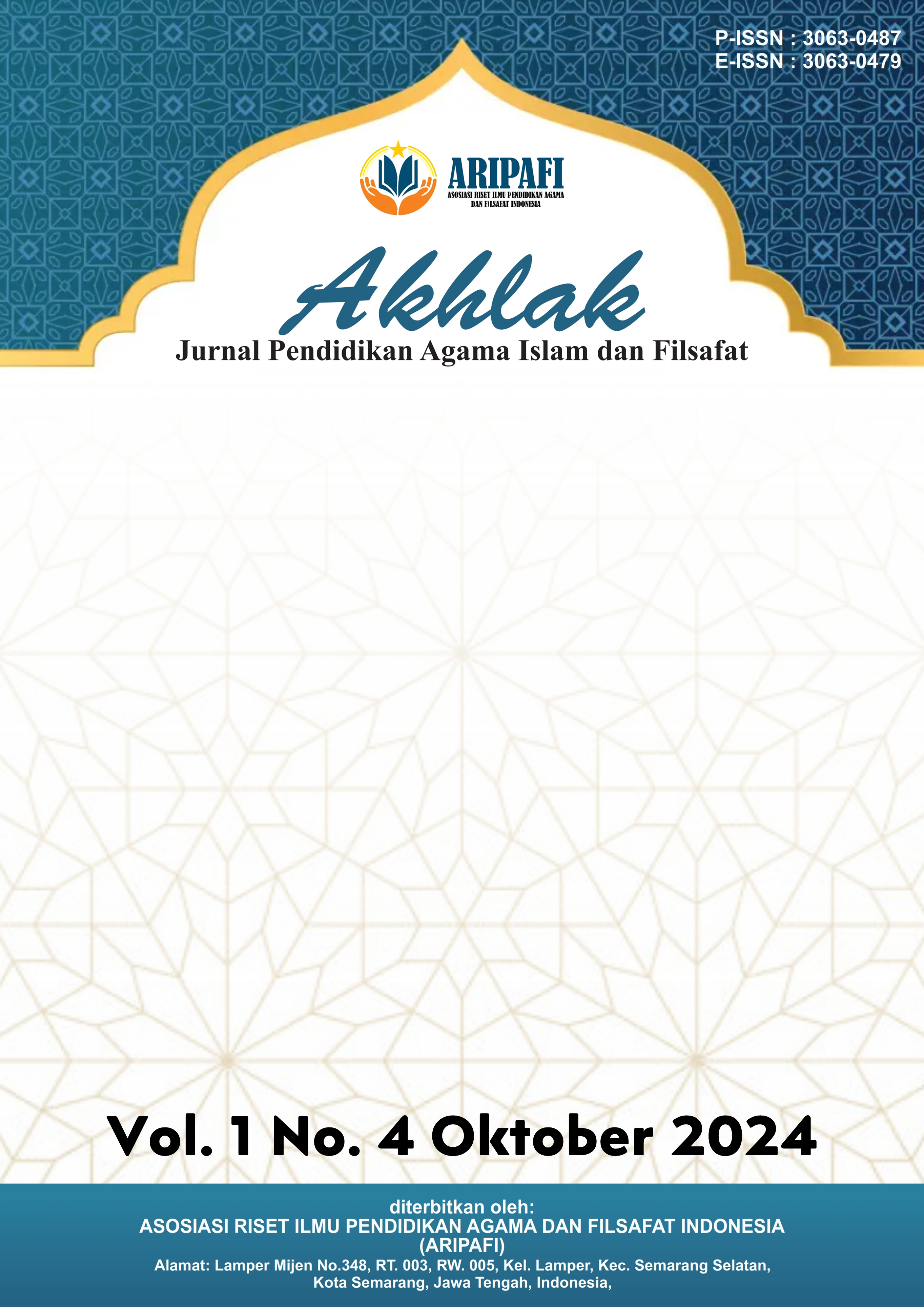Strategi Guru PAI dalam Mengelola Kelas yang Aktif, Efektif, dan Menyenangkan di MAS Jam’iyah Mahmudiyah Tanjung Pura
DOI:
https://doi.org/10.61132/akhlak.v1i4.124Keywords:
role of PAI teachers, classroom management, learning atmosphereAbstract
This study aims to explore the role of Islamic Religious Education (PAI) teachers in creating an active, effective, and fun classroom atmosphere at MTs Jam'iyah Mahmudiyah Tanjung Pura. The research method used was qualitative with a case study approach, collecting primary data through in-depth interviews with PAI teachers, students, and other related parties, as well as secondary data from relevant documents. The results showed that PAI teachers applied various strategies in classroom management, including creating positive interactions and using diverse learning techniques to prevent student boredom. The results of observations and interviews revealed that teachers' active participation in the teaching and learning process is essential to maintain students' motivation and engagement. Thus, the role of PAI teachers is not only as teachers but also as facilitators who support the development of students' potential through an interesting and interactive learning environment.
References
Agustiningsih, D. (2019). Peranan Guru Pendidikan Agama Islam Dalam Membangun Interaksi. Metro: Rajawali Press.
Astutik, P., & Hariyati, N. (2021). Peran Guru dan Strategi Pembelajaran dalam Penerapan Keterampilan Abad 21 Pada Pendidikan Dasar dan Menengah. Inspirasi Manajemen Pendidikan, 9(3)
Darmadi, H. (2015). Tugas, Peran, Kompetensi, Dan Tanggung Jawab Menjadi Guru Profesional. Jurnal Edukasi, 13(2).
Erwinsyah, A. (2017). Manajemen kelas dalam meningkatkan efektifitas proses belajar mengajar. TADBIR: Jurnal Manajemen Pendidikan Islam, 5(2), 87–105
Moleong, L. J. (2016). Metodologi Penelitian Kualitatif. Bandung: Remaja Rosdakarya
Sugiyono. (2017). Metode Penelitian Pendidikan Pendekatan Kuantitatif, Kualitatif dan RnD. Bandung: Alfabeta
Yanti, N. (2015). Keterampilan Guru dalam Pengelolaan Kelas. AL-ISHLAH: Jurnal Pendidikan, 7(2), 347–360






